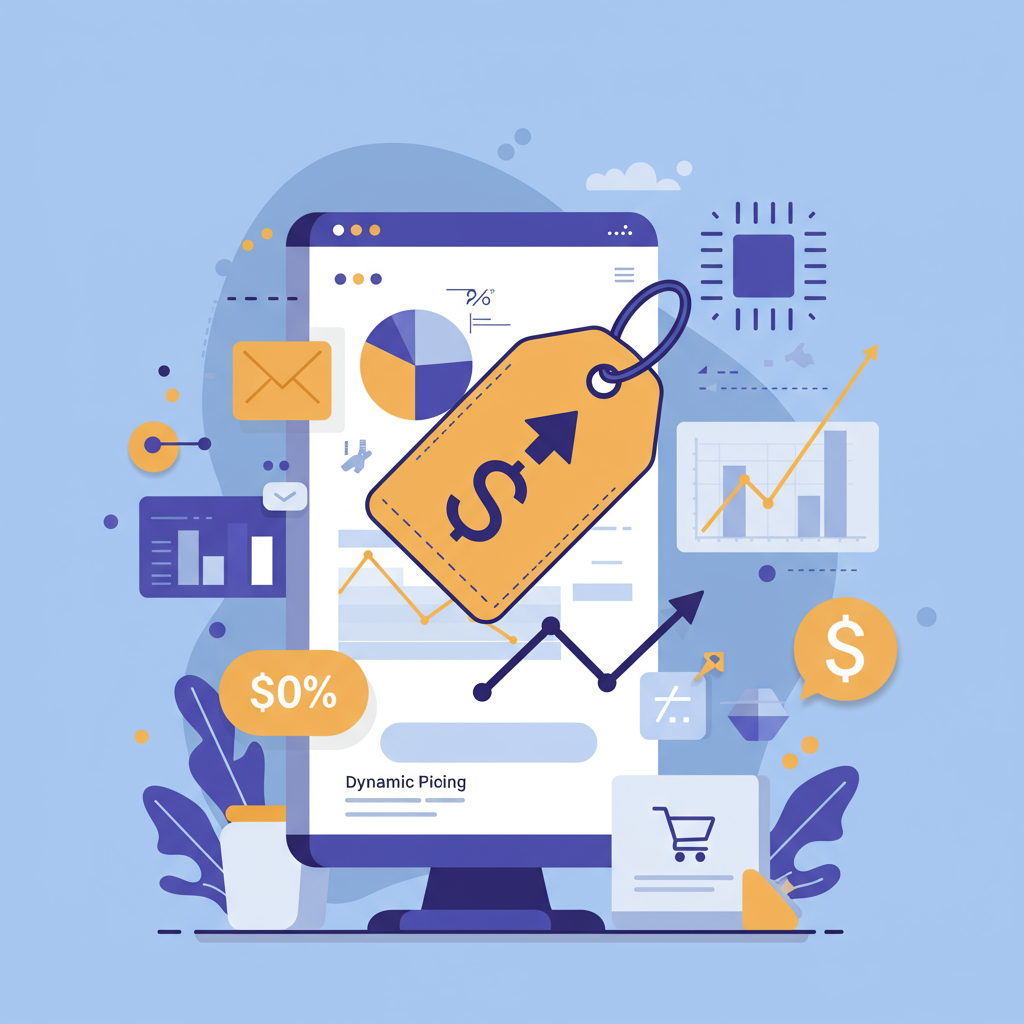Discover how leveraging artificial intelligence for real-time price adjustments can revolutionize your e-commerce profits and customer loyalty.
As a dedicated Shopify merchant, I’m constantly on the lookout for innovative strategies that can give my business a competitive edge.
One area that has truly transformed how I approach sales and revenue generation is pricing.
Gone are the days when I would set a static price for a product and leave it unchanged for months on end, hoping it was the ‘right’ number.
Today, I’ve embraced a far more sophisticated and powerful approach: dynamic pricing.
And at the very core of my successful dynamic pricing strategy lies the incredible power of artificial intelligence.
I want to share with you, my fellow merchants, exactly how leveraging AI for dynamic pricing on Shopify has not only optimized my profits but also significantly improved my customer relationships.
It’s not just about making more money; it’s about creating a more responsive, efficient, and customer-centric business model.
So, let’s start with the basics: what exactly is dynamic pricing? In essence, it’s the strategy of adjusting product prices in real-time.
These adjustments are based on a multitude of factors, including market demand, competitor pricing, time of day, customer behavior, inventory levels, and even external events.
Traditionally, implementing such a strategy was a manual, incredibly time-consuming, and often reactive process, making it impractical for most small to medium-sized businesses.
But with the advent of AI, I’ve found that dynamic pricing becomes proactive, incredibly precise, and remarkably efficient, almost like having a dedicated pricing analyst working 24/7.
AI algorithms possess the unparalleled ability to process and analyze vast amounts of data, far beyond what any human team could manage.
They can identify subtle patterns, predict future demand, and pinpoint optimal pricing points that maximize both revenue and conversion rates.
For me, the tangible benefits have been immediate and clear: I’ve seen a significant optimization of my profit margins across various product lines.
Beyond just profit, I’ve also noticed improved customer satisfaction because I can offer more competitive prices during periods of lower demand or special promotions.
This agility also helps me clear inventory more efficiently, reducing holding costs and freeing up capital for new stock.
You might be wondering, how does AI actually work its magic in this complex context? It all begins with data.
My AI system continuously ingests data from a diverse range of sources: historical sales records, real-time website traffic, competitor pricing feeds, and even customer browsing patterns.
It also considers external factors like seasonal trends, holidays, local events, and even social media sentiment related to my products.
Using advanced machine learning models, the AI then meticulously analyzes this colossal dataset to understand demand elasticity for each product.
It predicts with remarkable accuracy how even slight changes in price will affect sales volume and overall profitability.
Based on these sophisticated predictions, the AI automatically adjusts prices directly on my Shopify store.
These adjustments can occur with incredible frequency – hourly, daily, or even minute-by-minute for fast-moving items, depending on the product and market volatility.
I’ve explored and implemented various dynamic pricing strategies with the help of AI, each tailored to specific business goals.
Time-based pricing, for instance, allows me to offer strategic discounts during off-peak hours or run flash sales that expire quickly, creating urgency.
Demand-based pricing is crucial; prices naturally increase when an item is in high demand and decrease when interest wanes, ensuring I always capture optimal value.
Competitor-based pricing ensures I remain fiercely competitive by automatically matching or even strategically beating rivals’ prices when necessary.
Customer-segment pricing allows me to tailor offers based on a customer’s loyalty, purchase history, or even their browsing behavior, fostering personalized experiences.
Implementing this level of sophistication on Shopify might sound daunting, but I assure you, it’s becoming increasingly accessible for merchants of all sizes.
There are several excellent Shopify apps available today that are specifically designed for dynamic pricing, often powered by underlying AI algorithms.
These apps typically integrate directly with my store, making the setup process relatively straightforward, often requiring minimal technical expertise.
For more complex needs or highly customized strategies, I’ve also considered custom API integrations with dedicated AI pricing platforms, though this requires more development.
The key, regardless of the solution chosen, is ensuring a seamless and continuous data flow between your Shopify store and the AI pricing engine.
Of course, like any powerful tool, there are challenges and considerations. Transparency with my customers is vital; I always aim to be fair and avoid any perception of unfair practices.
Ethical considerations are paramount; I ensure my AI doesn’t engage in predatory pricing or discriminate unfairly against certain customer groups.
I also regularly A/B test my pricing strategies to ensure they are not only effective but also well-received by my customer base.
Continuously monitoring key performance metrics like conversion rates, average order value, profit margins, and customer feedback is absolutely essential.
My advice to fellow Shopify merchants looking to dive into this: start small, perhaps with a few key products or a specific category.
Gather data diligently, analyze the results of your initial tests, and then gradually scale up your dynamic pricing efforts as you gain confidence and insights.
The future of e-commerce pricing is undoubtedly dynamic, data-driven, and increasingly AI-powered.
It allows me to be incredibly agile, highly responsive to market changes, and ultimately, far more profitable than I ever was with static pricing.
It’s about finding that perfect sweet spot where customer value and business profitability align seamlessly, creating a win-win scenario.
I truly believe that embracing AI for dynamic pricing is a game-changer for any Shopify store looking to thrive in today’s competitive online landscape.
What are your thoughts on leveraging AI for pricing in your own business? I’d love to hear your perspective and experiences on this transformative topic.






